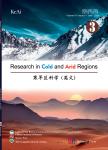Snow water equivalent over Eurasia in the next 50 years projected by aggregated CMIP3 models
Snow water equivalent over Eurasia in the next 50 years projected by aggregated CMIP3 models作者机构:National Climate CenterBeijing 100081China Center for Earth System ScienceTsinghua UniversityBeijing 100084China China Meteorological AdministrationBeijing 100081China State Key Laboratory of Cryospheric SciencesCold and Arid Regions Environmental and Engineering Research InstituteChinese Academy of SciencesLanzhouGansu 730000China
出 版 物:《Research in Cold and Arid Regions》 (寒旱区科学(英文版))
年 卷 期:2012年第4卷第2期
页 面:93-106页
学科分类:070904[理学-构造地质学] 0709[理学-地质学] 07[理学] 070602[理学-大气物理学与大气环境] 0706[理学-大气科学]
基 金:supported by the National Natural Science Foundation of China (40901045)
主 题:snow water equivalent projection CMIP3 Eurasia climate change simulation
摘 要:Based on remote sensing snow water equivalent (SWE) data, the simulated SWE in 20C3M experiments from 14 models attend- hag the third phase of the Coupled Models for Inter-comparison Project (CMIP3) was first evaluated by computing the different percentage, spatial correlation coefficient, and standard deviation of biases during 1979-2000. Then, the diagnosed ten models that performed better simulation in Eurasian SWE were aggregated by arithmetic mean to project the changes of Eurasian SWE in 2002-2060. Results show that SWE will decrease significantly for Eurasia as a whole in the next 50 years. Spatially, significant decreasing trends dominate Eurasia except for significant increase in the northeastern part. Seasonally, decreasing proportion will be greatest in summer indicating that snow cover in wanner seasons is more sensitive to climate warming. However, absolute decreasing trends are not the greatest in winter, but in spring. This is caused by the greater magnitude of negative trends, but smaller positive trends in spring than in winter. The changing characteristics of increasing in eastern Eurasia and decreasing in western Eurasia and over the Qinghai-Tibetan Plateau favor the viewpoint that there will be more rainfall in North China and less in the middle and lower reaches of the Yangtze River in summer. Additionally, the decreasing rate and extent with significant decreasing trends under SRES A2 are greater than those under SRES B1, indicating that the emission of greenhouse gases (GHG) will speed up the decreasing rate of snow cover both temporally and spatially. It is crucial to control the discharge of GHG emissions for mitigating the disappearance of snow cover over Eurasia.



